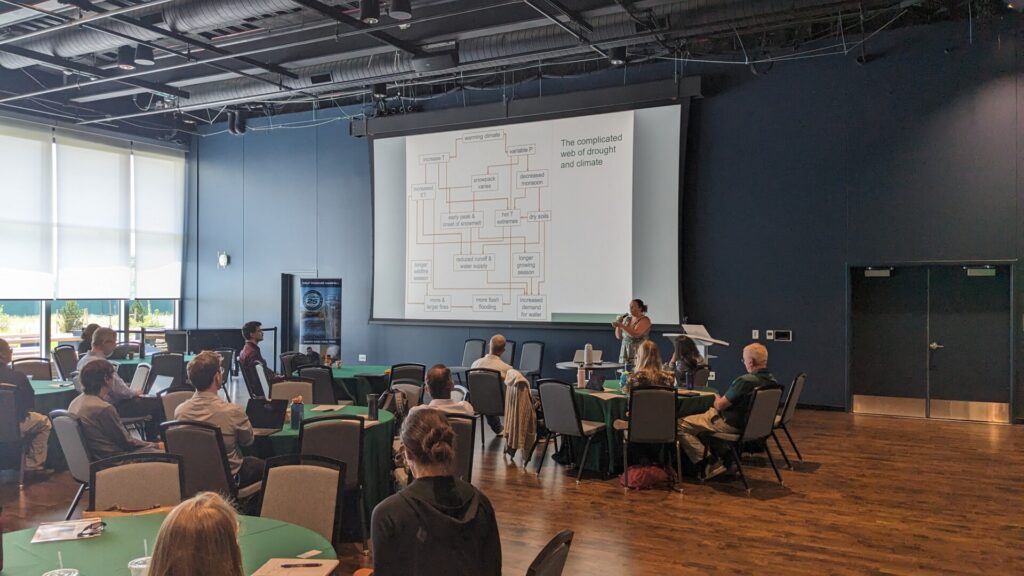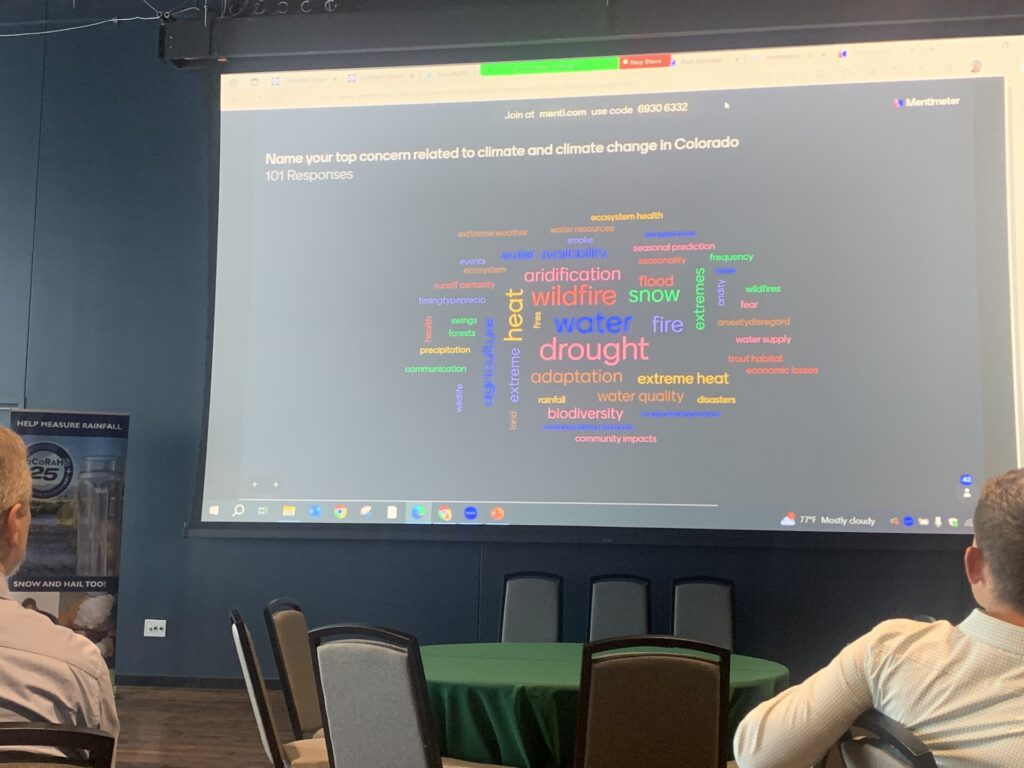
While Colorado’s climate has been historically hard to predict, one thing is clear: Data trends show that it is becoming increasingly warmer, with a higher probability of droughts and wildfires, and changes to other weather events like severe storms and floods.
Climate change makes studying Colorado’s unique meteorological patterns all the more important, and it’s a big job – one that the Colorado Climate Center can’t do alone. That’s why dozens of partners from agencies including the National Weather Service, U.S. Forest Service and National Oceanic and Atmospheric Administration gathered at the Colorado State University Spur campus in Denver Aug. 8-9 for the Colorado Climate Services Summit.
“We’ve had seven of the nine warmest temperatures on record since 2012,” said Colorado State Climatologist Russ Schumacher, whose team is based in the CSU Department of Atmospheric Science. “We’re going to contend with the issues that arise from heat and drought for the foreseeable future, and that’s why we’re working to bring providers and services together.”
This year’s Colorado Climate Summit presenters touched on everything from drought to water to wildfires. Here are some of the key takeaways from the conference about the climate in Colorado and beyond.
Despite record moisture in the spring, drought is creeping in – especially in southwest Colorado
The Colorado Climate Center has been monitoring weather trends in the Centennial State since 1973, and has since been tasked with confirming everything from the state’s highest temperature (115 degrees at John Martin Reservoir in 2019) to the largest known hailstone (a new record stone of 5.25 inches may have fallen this month in eastern Colorado!).
This June was a big one for the record books, with high amounts of precipitation on the Eastern Plains compounded with strong mountain snowpack rendering Colorado drought-free for the first time in four years.
However, this didn’t last long. During a presentation outlining the work of the Colorado Climate Center, Schumacher and Assistant State Climatologist Becky Bolinger demonstrated that drought is already back in parts of the state – notably southwestern Colorado, which experienced an unusually warm and dry July.
Nevertheless, it isn’t all bad news.
“We’ve had an amazing influx of moisture from snowpack pretty much over all of Western Colorado,” Bolinger said. “This means the reservoirs in Colorado are still looking pretty good.”
All told, roughly 4.5% of the state is now under drought conditions, and it’s expected to get drier. The Colorado Climate Center is able to pull data about the factors that define drought – from precipitation to water supply to soil conditions – and provide recommendations to state leaders.
Each month, the Colorado Climate Center publishes a report outlining key weather trends throughout the state: https://bit.ly/47q1evj.
Don’t forget about Colorado’s rangeland
Retta Bruegger, a range management specialist with CSU Extension, took time during the summit to discuss a large swath of Colorado that’s often left out of climate conversations: rangeland, which accounts for 60% of the state.
“These lands and the people who depend on them for their livelihoods are very impacted by drought,” Bruegger said.
Rangeland is a natural ecosystem dominated by native species and perennials. Their main purposes are grazing, but they also serve as vital habitats for insects to birds to antelope and elk.
Bruegger recounted how one rancher called her and asked if it’s worth getting out of the business now due to dry conditions.
Luckily, she says rangeland specialists like her are developing tools to gather data and help ranchers make informed decisions about how they could evolve, be it through diversifying their businesses to changing grazing patterns. Many of those lessons are outlined in the Colorado Drought Planning Handbook: https://bit.ly/47vRuQ8.
Tracking Colorado’s climate is more important than ever
The Colorado Climate Center team has been gathering data from a variety of sources to compile a climate change report, which should be released this fall.
Some of the early findings indicate that most parts of the state are getting warmer in all seasons, but precipitation trends are less clear, though the early 21st century has been drier than the late 20th.
During a presentation at the Colorado Climate Summit, Bolinger outlined how their report shows how this warming is already causing reductions on snowpack, soil moisture and stream flows – and that temperatures could increase by 2.5 to 6 degrees by 2050.
“Climate extremes and hazards have already become more frequent and intense due to wildfires,” she said. “That includes heat waves and drought.”
Experts share similar concerns about climate change
To kick off the summit, attendees were asked to sum up their biggest climate concern in one word. Wildfire, water and drought were some of the most prominent in a word cloud – and all three are topics the Colorado Climate Center will continue to monitor.
